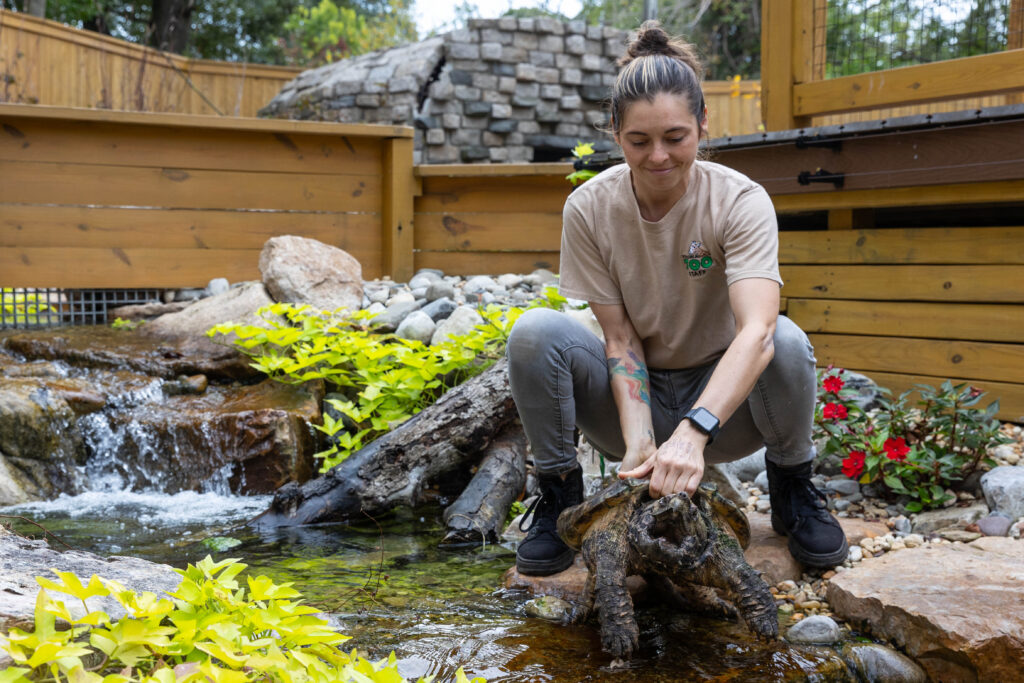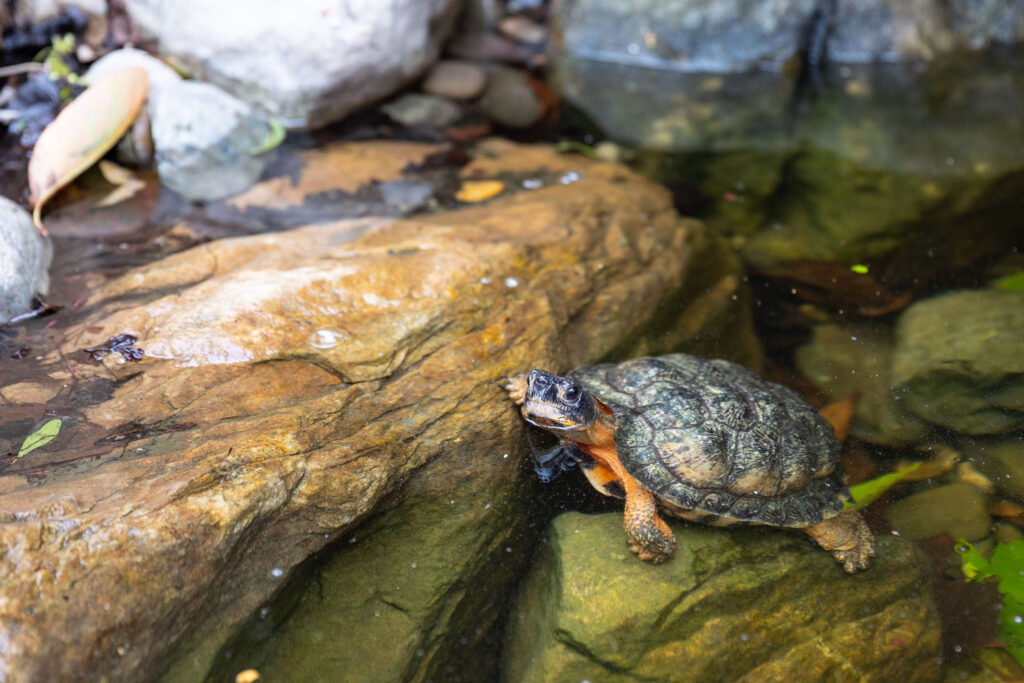Where did the turtles go for the winter?
We’ve got some turtle-iffic news – 26 turtles have moved into our upcoming Turtle Oasis habitat, which will house wood turtles, spotted turtles, Blanding’s turtles, alligator snapping turtles and additional species in the future! While our Animal Care and Horticulture teams work hard to prepare this space for a springtime grand opening, the turtles will spend the colder months brumating – essentially a reptile’s version of hibernation.

What is brumation?
Brumation is a period of dormancy which reptiles undergo during colder temperatures. Turtles are cold-blooded, meaning their body temperature is affected by their environment; brumating helps them survive the winter. Unlike hibernation, turtles are not actually asleep during brumation, but rather they become sluggish, their metabolism slows, and they enter a state of torpor, or mental inactivity. They can survive without food and very little oxygen for several months in this state – isn’t that amazing?
Brumation is also important for the regulation of hormones in reptiles and for reproductive success. This period of inactivity is a sort-of reset for their bodies, preparing both males and females for mating season in the spring.
When their bodies start to receive cues that days are getting shorter and colder, turtles will move into slow-moving streams, rivers or ponds where they will nestle in mud and leaf piles along the bottom, along banks under logs and roots, or even sometimes in other animals’ burrows, depending on the species. The wood, spotted, Blanding’s and alligator snapping turtles in the Oasis will all go through brumation underwater.
Our turtles may still be active on a warm, sunny, winter day. When temperatures get high enough, they may come up to the surface to bask in the sun or be seen moving underwater, but they will return to brumating before it gets too cold again. Depending on the climate, turtles can brumate for about 3-5 months.

How does the Zoo care for turtles in brumation?
Similar to mammals who need to store body fat prior to hibernation, turtles should spend the summer months preparing for brumation nutritionally. Our turtles are fed 3-5 times weekly while they’re up and active which provides enough body weight to brumate. They won’t be fed while temperatures are below 60 degrees, but they will be able to eat plants and algae at their leisure. Food may be offered if they are seen basking on a warmer day as this would indicate higher activity levels.
The water in the Turtle Oasis is moving, so freezing temperatures are not a concern. Other spotted and wood turtles who live outside year-round at the Zoo have even been seen moving around and breeding under ice in the past! Our herpetology keeper team will continue to perform visual checks on the turtles in the Oasis several times a day, as they do throughout the year.
Overall, brumation adds to the health of the turtles by allowing their bodies to reset and adapt to the changing seasons. Check back to see them more active in the springtime!